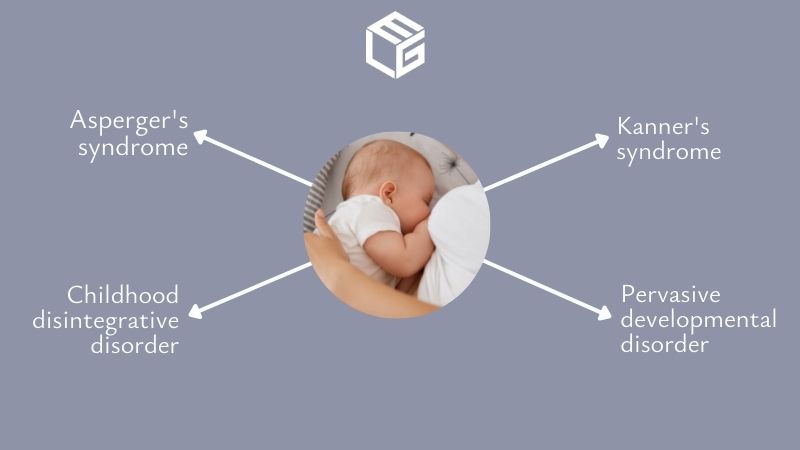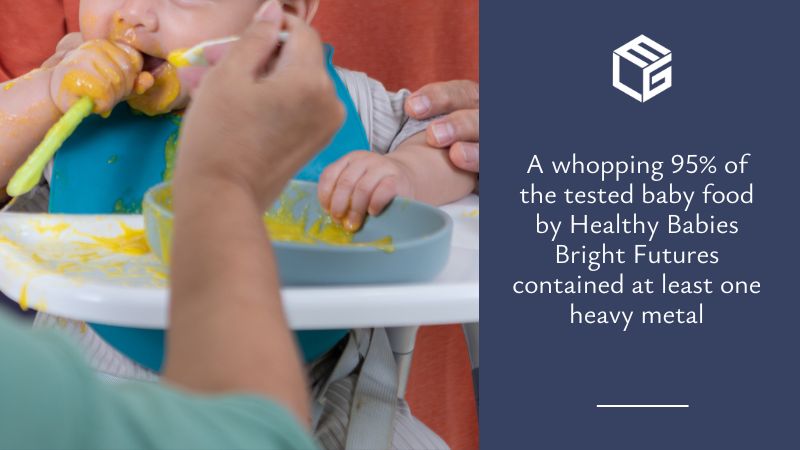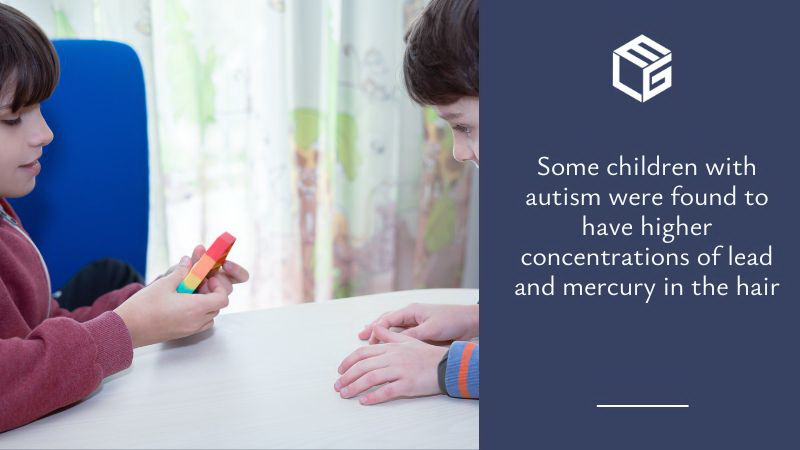Children are particularly vulnerable to the negative health effects of exposure to heavy metals
Heavy metals occur naturally in the environment, more specifically in the earth, and they cannot degrade. While some heavy metals are essential for the proper functioning of our bodies as trace elements such as selenium, copper, and zinc, when they exist in great amounts, they put our health at high risk.
The following are the most common, as well as the most concerning, heavy metals that are present in certain brands of baby food:
- arsenic
- lead
- mercury
- cadmium
In children, exposure to high concentrations of heavy metals can be fatal. Nevertheless, exposure to lower concentrations over the course of several years, which is how it occurs in the case of being fed baby food, can lead to cognitive disorders and learning disabilities. This is because heavy metals are neurotoxins that affect the normal development of the brain and cause deficits in cognitive function and behavioral performance.
If you wonder how heavy metals end up in baby food, the answer is simple - they exist in the soil and in synthetic pesticides used on crops. Heavy metals can be avoided by buying organic vegetables and they can be removed from crops using bioremediation tools. However, these are steps most baby food companies have avoided taking.
Eligibility criteria for toxic baby food claims
To become eligible to file a toxic baby food claim, parents must have fed their baby one or multiple food products mentioned on this page. Moreover, their child must have been diagnosed with one of these autism spectrum disorders before the age of 6:
Naturally, when mothers finish breastfeeding their babies, roughly 90% of them will buy formula and baby food from the store as a new form of nourishment for their child.
However, for several decades, heavy metals have been lurking in baby food and when parents become aware of this alarming issue, safe, non-toxic sources of sustenance must be found for the child. Many parents had not been aware of the presence of neurotoxins in baby food until recently. For this reason, if a parent fed their baby some of these products and the child later developed a disorder on the autism spectrum, they have the right to file a claim for compensation.
Interestingly, 1 out of 44 children born in and after 2010 has autism (source: Centers for Disease Control and Prevention). This means that over 2% of the children in the country struggle with autism, or 596,852 young individuals. Since 2008, there have been 54,730,000 births in the U.S. The average age of diagnosis for disorders on the autism spectrum is 5. The prevalence of autism may have a link to the presence of neurotoxins in baby food, as these hazardous substances take a heavy toll on the development and cognitive function of a child. If a parent is in the situation above, they should reach out to our legal team, as we have been pursuing cases like yours for over 25 years, by virtue of which we have the necessary experience, knowledge, and resources to obtain the most favorable outcome for the child.
Baby foods with dangerous levels of neurotoxins that are currently on the market
A recent investigation led by Healthy Baby's Futures, a consumer advocacy group, selected 168 individual containers of 13 different food types under 61 baby food brand names. The researchers tested for the four heavy metals and also for perchlorate, and the results were shocking and appalling - only 9 out of the 168 containers had no neurotoxin. These are the brands of baby foods, as well as the name of the products, that contain dangerous levels of neurotoxins and we file claims for:
- Beech-Nut Rice Single Grain Baby Cereal
- Beech-Nut Oatmeal Whole Grain Baby Cereal
- Beech-Nut Organics Just Carrots
- Beech-Nut Classics Sweet Carrots
- Beech-Nut Classics Sweet Potatoes Stage 2
- Beech-Nut Classics Mixed Vegetables Stage 2
- Earth's Best Organic Sensitivity DHR/ARA Infant Formula with Iron
- Earth's Best Organic Whole Grain Rice Cereal
- Earth's Best Organic Sesame Street Peanut Butter Baked Corn Puffs
- Earth's Best Organic Spinach and Potato Baby Food 6 months
- Gerber Multigrain Cereal
- Gerber Rice Single Grain Cereal
- Gerber Oatmeal Single Grain Cereal
- Gerber Whole Wheat Whole Grain Cereal
- Gerber Barley Single Grain Cereal
- Gerber Diced Carrots Veggie Pickups
- Gerber Carrot Sitter 2nd Food
- Gerber Carrot Supported Sitter 1st Goods
- Gerber Sweet Potato Supported Sitter 1st Foods Tub
- Gerber Sweet Potato Sitter 2nd Foods
- Gerber Fruit & Veggie Melts Truly Tropical Blend Free
- Gerber Arrowroot Biscuits
- Plum Organics Mighty Morning Bar
- Plum Organics Teensy Snacks Berry
- Plum Organics Grow Well Tummy
- Plum Organics Grow Well Muscle
- Plum Organics Little Teethers
- Plum Organics Mighty Snack Bars
It is important to mention another neurotoxin in the context of contaminated baby food, namely perchlorate. Any concentration greater than 1 ppb of perchlorate in baby food or drinking water can put the health of a child at high risk. While perchlorate is not a heavy metal itself, it is a strong oxidizer that will accelerate the release of heavy metals in the soil. Therefore, it can be present in baby food along with heavy metals.
What are the concerning levels of neurotoxins in baby food?
Unlike baby food with dangerous concentrations of heavy metals, these products contain a smaller amount of neurotoxins but are still deemed unsafe. Therefore, parents who have fed their infant or toddler the baby foods on this list qualify for filing a claim too.
Firstly, it is important to define what a concerning level of heavy metals is when it comes to baby food. These are the official amounts of neurotoxins in baby food:
- arsenic: 40 to 75 ppb
- lead: 7 to 17 ppb
- mercury: 1 to 3 ppb
- cadmium: 10 to 25 ppb
FDA limits and regulations for toxicity in baby food
Regrettably, the FDA has limited and regulated the presence of only SOME heavy metals in baby food, which leaves a lot of manufacturers free to skip checking the level of neurotoxins in their products.
In October of 2021, Attorney General William Tong joined 23 other attorneys general petitioning the FDA to protect the health and well-being of children across the country by prompting actions to eliminate heavy metals from baby food.
The petition is a response to the rising alarm regarding the health hazard of heavy metals in baby food and the failure of companies and suppliers to reduce the risks. The following are the FDA limits with regard to the four heavy metals of concern found in a wide range of baby food expressed in parts per billion (ppb):
- arsenic: the limit is 100 ppb, but it only applies to rice cereals made for infants and not to other types of baby food
- lead: there is no limit when it comes to lead in baby food at the moment, but the limit in drinking water is 5 ppb
- cadmium: no limit has been set by the agency for cadmium in baby food, but the limit is also 5 ppb for drinking water
- mercury: the agency has not enforced any limit concerning mercury as well, but for drinking water, the limit is 2 ppb
Earlier this year, the Food and Drug Administration said that it was taking actions "to remove from the market certain products that contain detectable levels of lead with little to no nutritional value, and those containing cadmium." The agency also claimed that it "has taken at least 20 regulatory actions against infant formula and baby food manufacturers for violating current good manufacturing practices in the last year alone" and that "the federal watchdog agency cited poor product quality control as a major reason for these violations."
The Baby Food Safety Act of 2021
Nevertheless, on March 26, 2021, the bill known as the Baby Food Safety Act was introduced in the House by Congressman Raja Krishnamoorthi with the purpose of establishing the maximum concentrations allowable of the four heavy metals in infant and toddler food, which is defined as products sold for children up to 36 months old (source: Congress). Here is what this bill proposes in respect of the permissible limit of heavy metals in baby food:
- arsenic: 10 ppb inorganic arsenic cap on baby food in general with a 15 ppb inorganic arsenic cap on infant cereal
- lead: 5 ppb lead cap on baby food and 10 ppb lead cap on infant cereal
- cadmium: 5 ppb cadmium cap on baby food and 10 ppb cap on infant cereal
- mercury: 2 ppb mercury cap on all baby food
Seven months after releasing the report concerning the presence of heavy metals in popular brands of baby food, the initiator of the Baby Food Safety Act of 2021 had his subcommittee on economic and consumer policy issue a follow-up alleging that the industry "consistently cut corners and put profit over the health of babies and children."
The Baby Food Safety Act of 2021 has not yet passed the Senate so that it can move forward, which means that it is pending. We should expect to hear updates about it within the following months. If it becomes effective, the risk of children developing autism spectrum disorders will significantly diminish, and baby food will become completely safe to consume for infants and toddlers.
Finally, to help families whose children have been fed any brand of toxic baby food, we took the initiative to set up a baby food replacement initiative. Also, if a child has any of the qualifiable diseases, parents may also want to visit our testing requests page.


